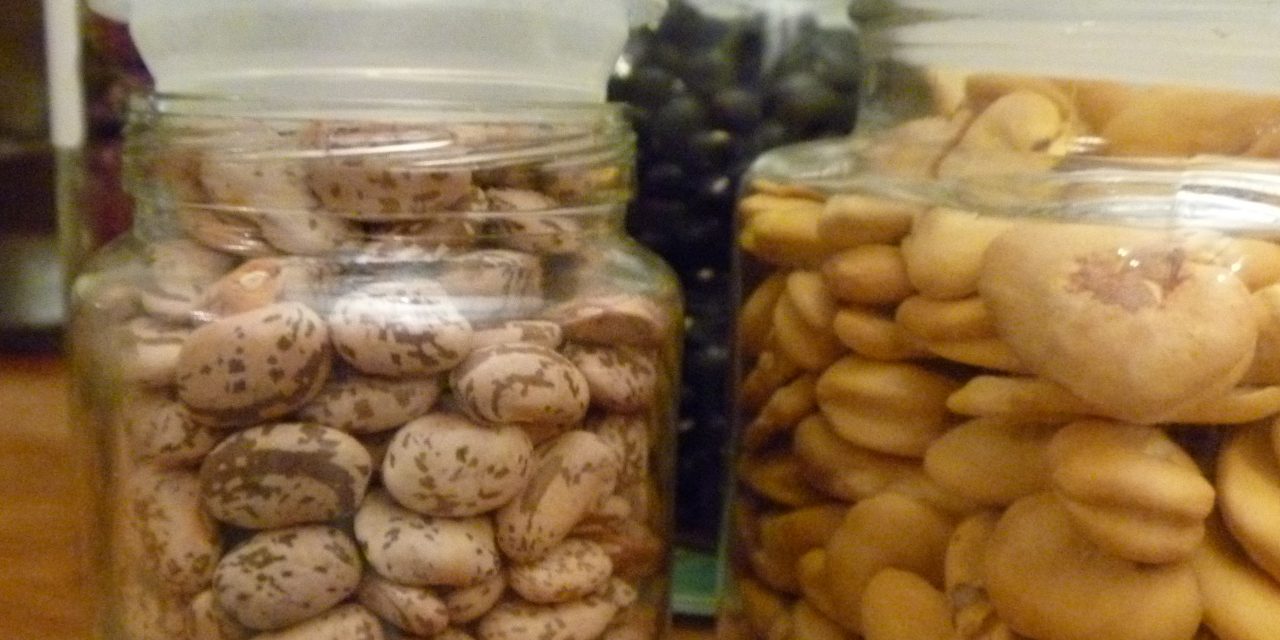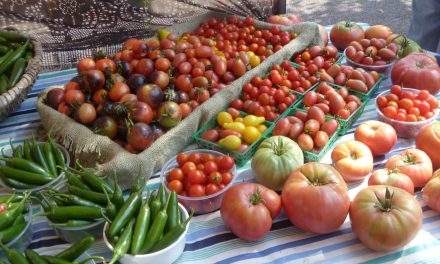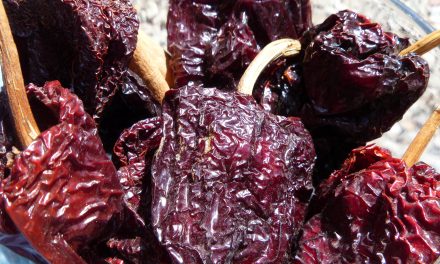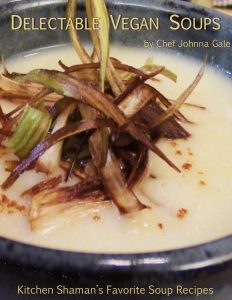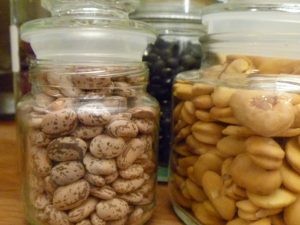 There is a large variety of legumes (beans) in the world, over 4,000 have been categorized. To further complicate matters, there are fresh beans, classified as vegetables, and then there are pulses (legumes). I’ll leave it to wikepedia, and other sources to sort this all out for you, while we continue on to how to process legumes, the dried bean.
There is a large variety of legumes (beans) in the world, over 4,000 have been categorized. To further complicate matters, there are fresh beans, classified as vegetables, and then there are pulses (legumes). I’ll leave it to wikepedia, and other sources to sort this all out for you, while we continue on to how to process legumes, the dried bean.
In my kitchen, I’ve learned to appreciate more then just the pinto bean, which is one of the most highly consumed beans in the southwest. There are black or turtle beans, fava or broad beans, chickpeas and garbanzos. I’m working on incorporating anasazi beans, and white beans. These form the basis of our protein diet, since my partner is gluten-free and cannot consume wheat for protein.
The theory is that it is necessary to soak beans prior to cooking. I still do this because I was taught to as a child, and not told why. In my fledgling chef pursuits, I learned that we soak beans because it helps to lower the sugars in beans that cause flatulence (farting or gas). It also drastically reduces the cooking time necessary for beans. If you are going to make Falafel from scratch it is necessary to soak the fava beans and chickpeas first.
Beans also require flavor. In order to flavor the broad bean, after soaking, I cook it with lemon juice and cumin added to the water. This gives this protein packed bean some great flavor. Black beans get a treatment of salt and epazote, and maybe a dried chili or two. I like to puree or “refrie” the black beans in much the same manner as pinto beans. When I am going to make chili, I’ll soak all the beans first, cook them, and then add them to the chili.
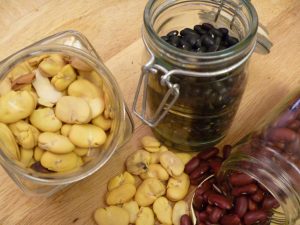 Why not canned beans? Wouldn’t that make my life easier in cooking at home? The answer is simple. Once the beans are cooked, it is hard to get the flavor I want incorporated into the beans. Really, the flavor needs to be added as you cook them. Yes, it is a personal preference, and yes it would take less time if I bought canned beans. But have you tried looking for canned Fava beans in any store? There is only one market in the Phoenix Valley that I can find even just dried fava beans in bulk.
Why not canned beans? Wouldn’t that make my life easier in cooking at home? The answer is simple. Once the beans are cooked, it is hard to get the flavor I want incorporated into the beans. Really, the flavor needs to be added as you cook them. Yes, it is a personal preference, and yes it would take less time if I bought canned beans. But have you tried looking for canned Fava beans in any store? There is only one market in the Phoenix Valley that I can find even just dried fava beans in bulk.
Storing: The dried beans that I purchase go into bulk containers, and sit on my shelf waiting for me to cook them. Once cooked, they go into airtight containers and refrigerated for up to 5 days. Any longer and then they get a bit nasty and smelly.
And here’s a list of some of the available Legumes or beans, in their dried state:
- anasazi beans
- turtle or black beans
- broad or fava beans
- white beans
- great northern white beans
- lima beans
- pinto beans
- adzuki beans
- soybeans
- lentils (and there is a wide assortment!)
- chickpea or garbanzo beans
- butter beans
- Calico Beans
- Cannellini Beans
- Split Peas
- Mung Beans
- navy beans
- Black-eyed peas
- Red beans
- Kidney beans

